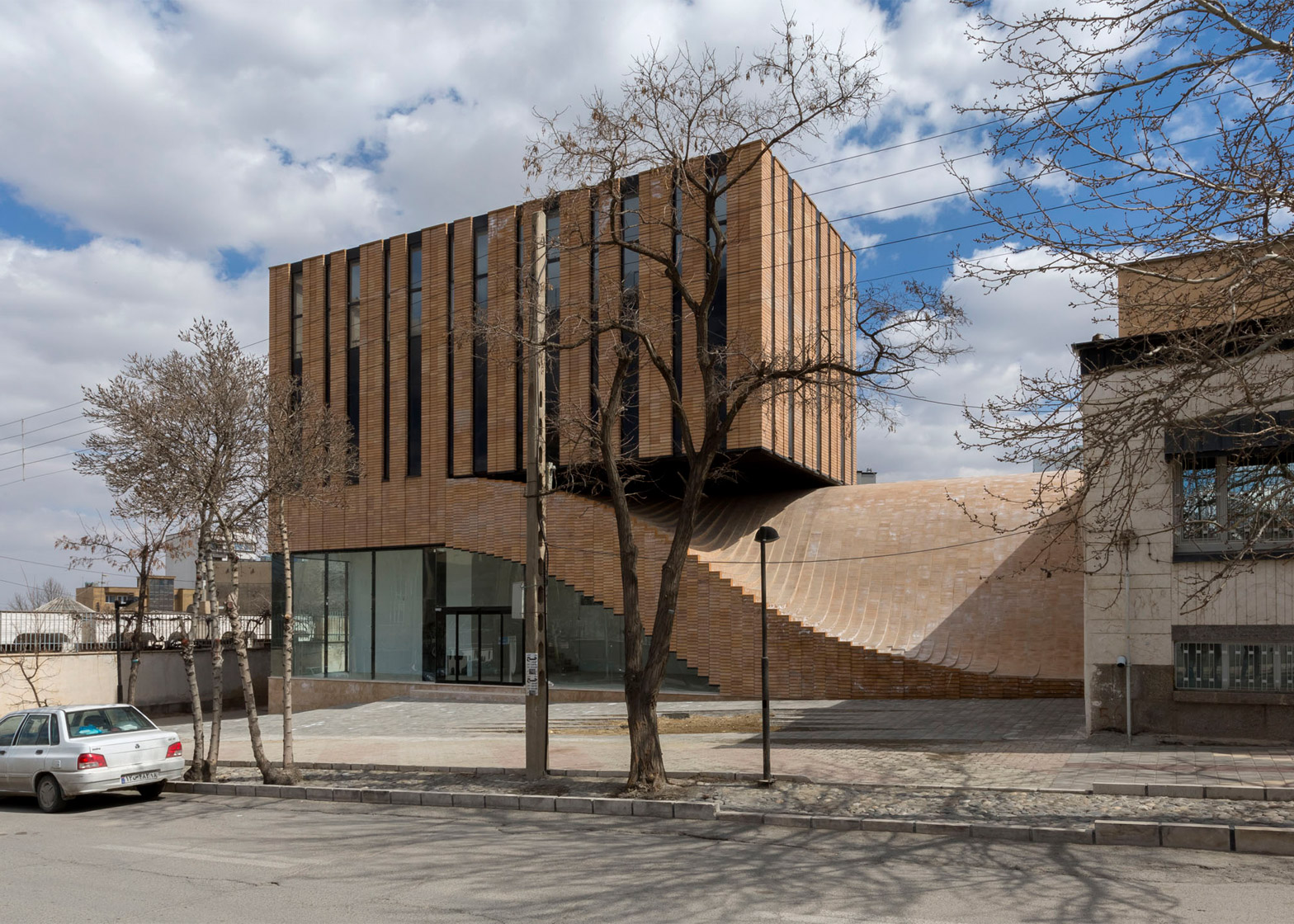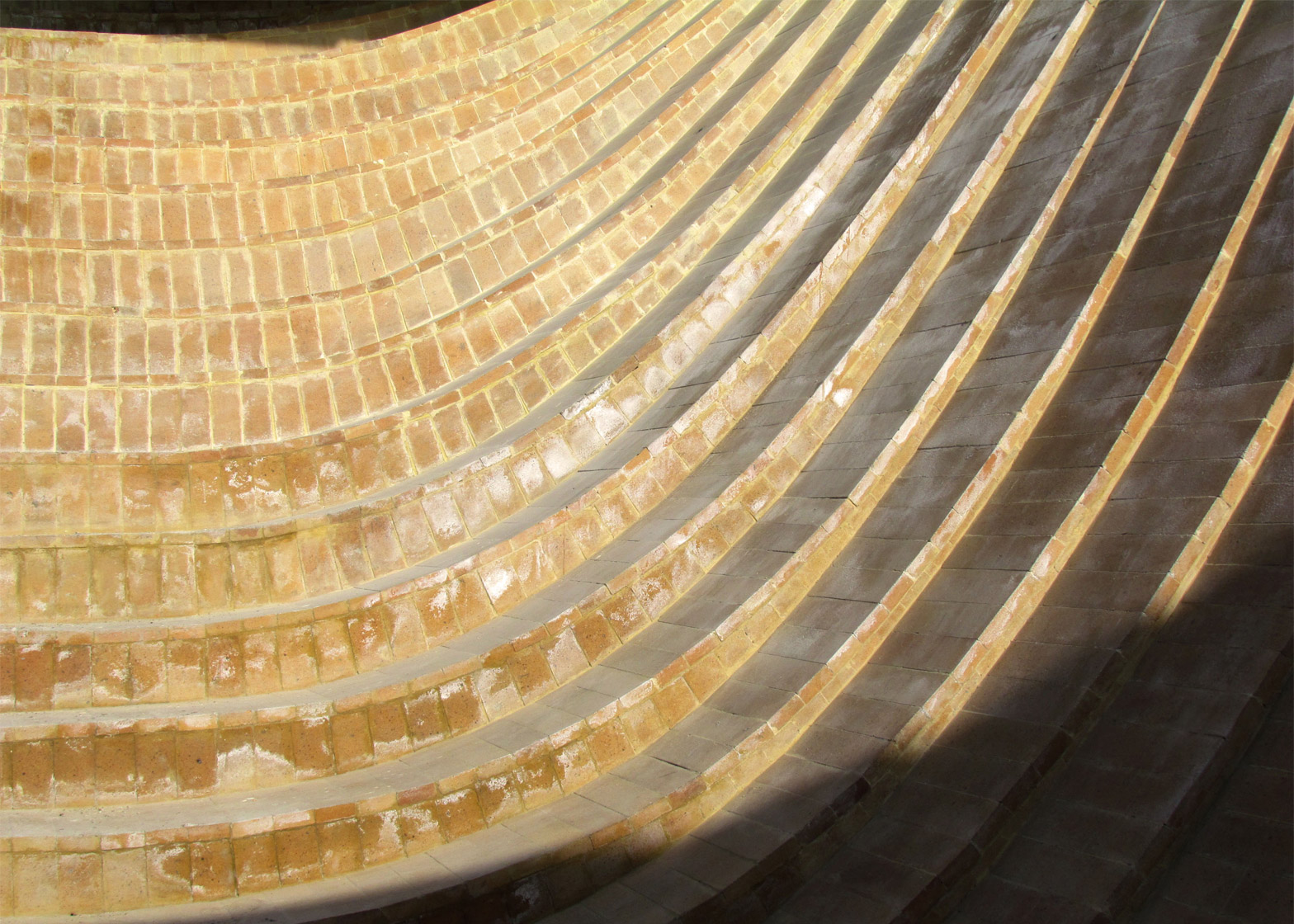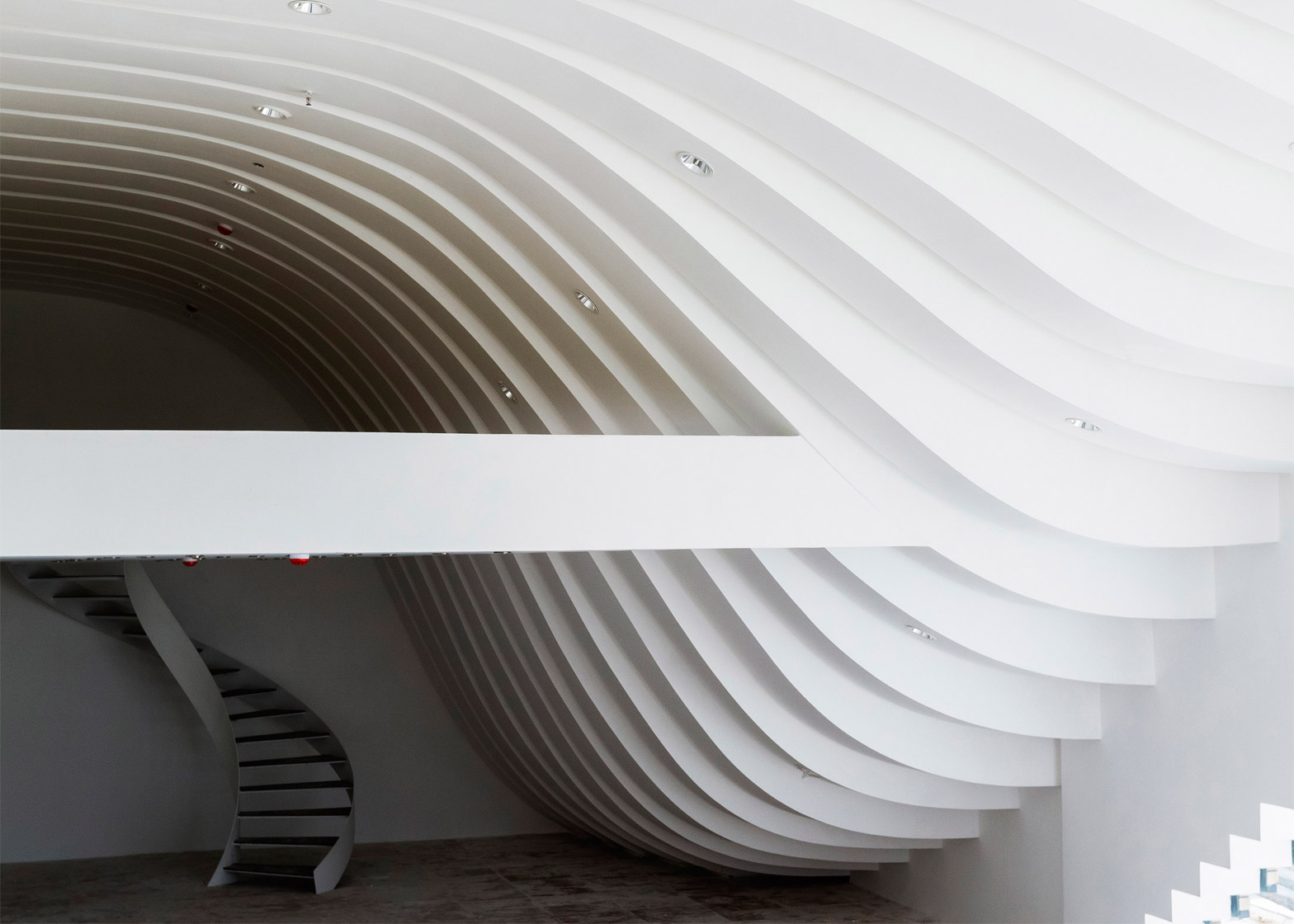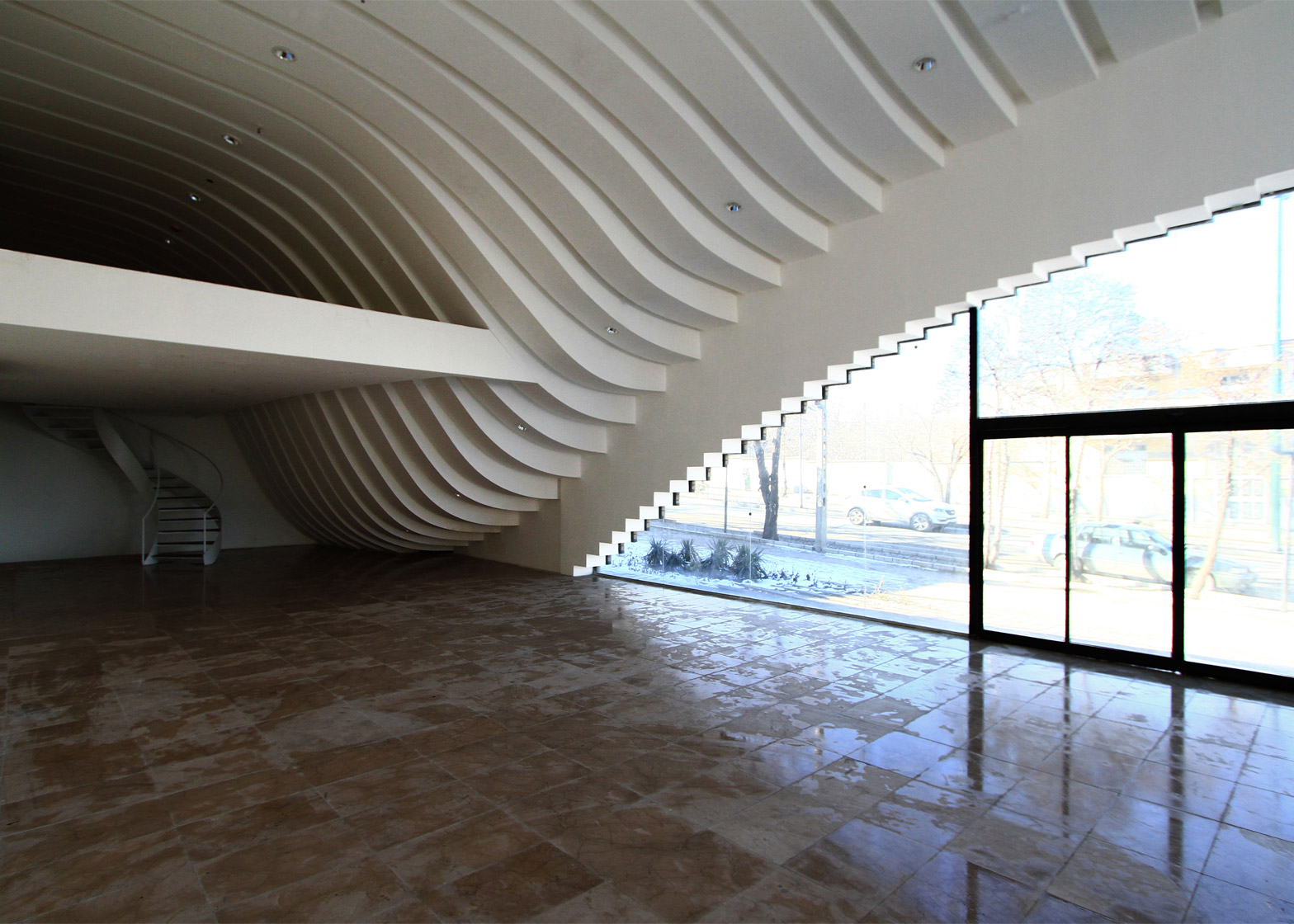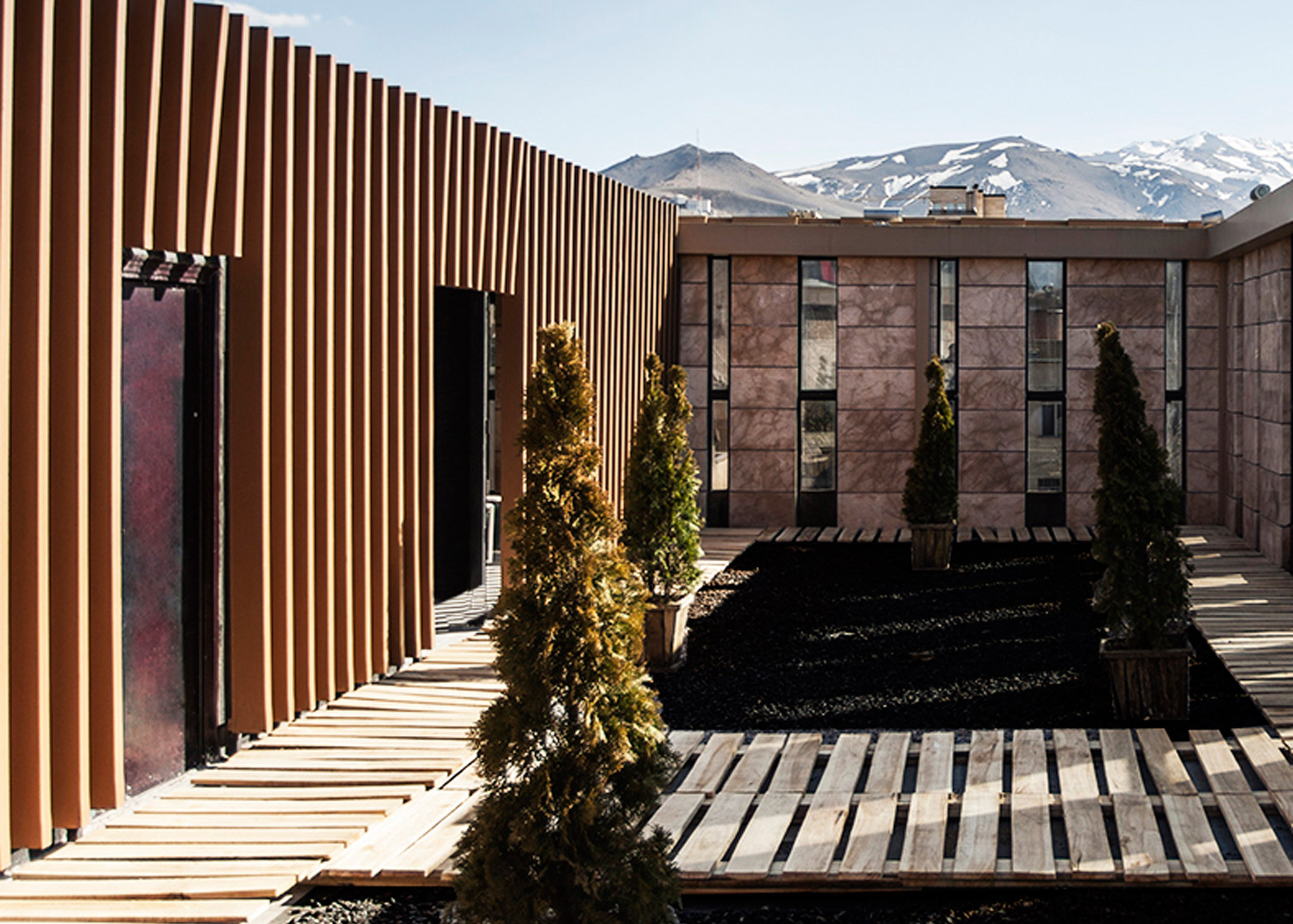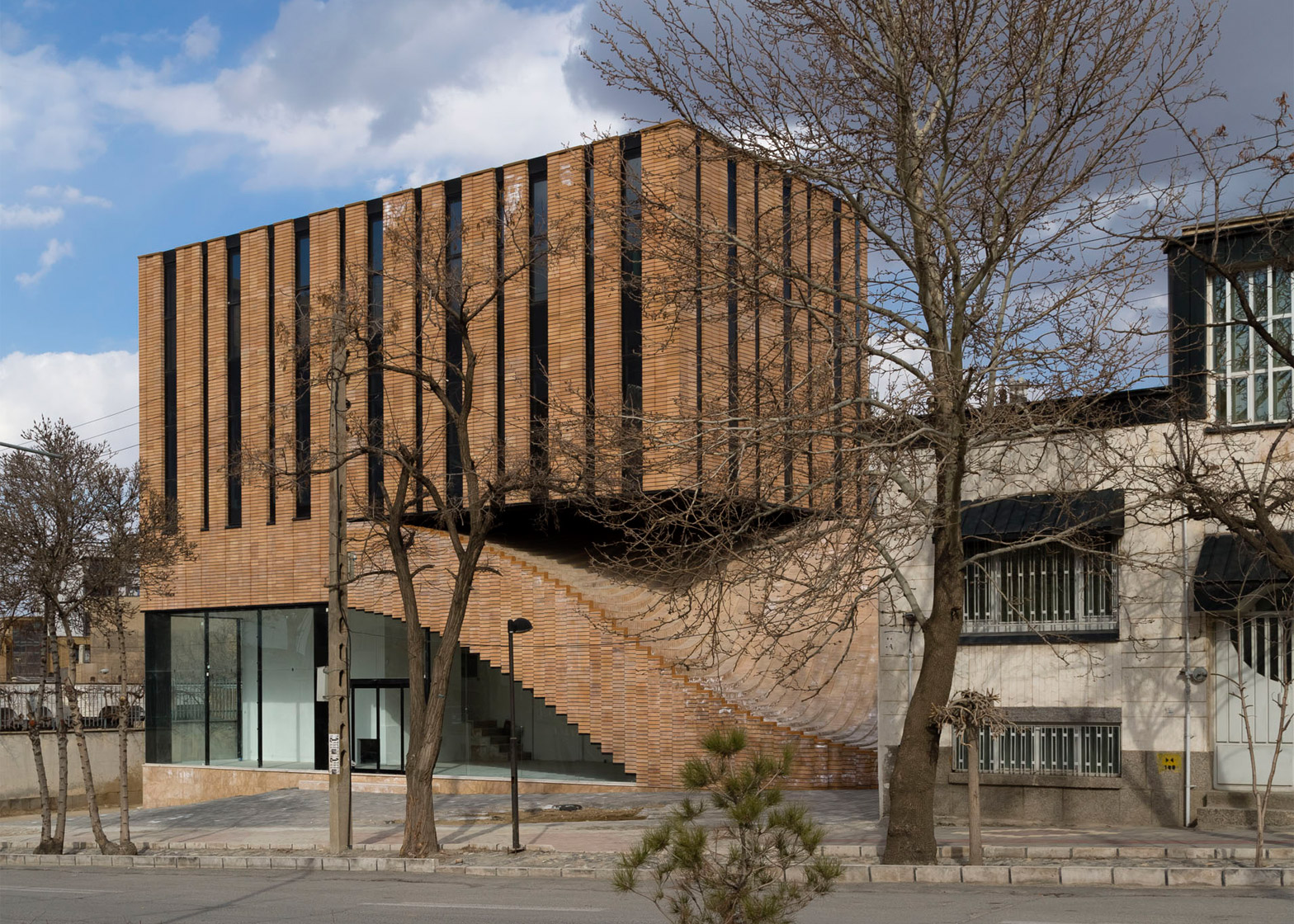The brick facade of this mixed-use building in the Iranian city of Hamedan merges with a wave-like roof that the public is invited to sit, walk or play on (+ slideshow).
The Termeh building was designed by architects Farshad Mehdizadeh and Ahmad Bathaei to accommodate two separate occupants and two distinct functions: a retail space on the ground floor and an office on the level above.
It is designed to connect with the city's public realm and is influenced by Hamedan's many public squares, which are linked by wide boulevards.
One of these boulevards runs along one edge of the building, so the architects decided to emphasise the connection between the interior and the street by bringing the roof down to meet the pavement.
"The building performs two different functions that are normally connected to the public space through a central core, so we wanted to decentralise the access," Mehdizadeh told Dezeen.
Following the lifting of international economic sanctions, Iran is experiencing a boom in innovative contemporary architecture, with recent examples including an apartment building in Tehran featuring a slatted timber facade interrupted by faceted window frames, and a private house comprising three stacked volumes angled towards different views.
In the case of Termeh, large windows display the interior of the ground-floor retail unit, inviting passers-by to step off the street into the building. The office block above features narrow vertical windows that protect the interior from the harsh western sunlight.
Brick cladding that extends from above the ground floor windows sweeps down towards the street, forming an accessible surface.
The building it titled after the traditional handwoven Iranian cloth Termeh, which is evoked by the undulating form. Local bricks laid in traditional patterns match the facades found on many buildings in the neighbourhood.
The undulating brickwork also provides access to the upper level of the building, where there is an entrance to the office.
"I don't describe the roof as a staircase because stairs are an element that repeats, but this element has different scenarios, dynamics and qualities for people going up though that wave-like form," Mehdizadeh said.
"People can sit or play on it like a small plaza. Stairs have a function, but this element performs in public space."
The sweeping roof forms a dramatic ribbed ceiling inside the retail space that accommodates a mezzanine level under its highest point.
A second entrance to the office is positioned around the corner from the main boulevard, where a more typical staircase ascends from the level of the parking entrance to the workspace.
The staircase continues to a roof terrace for the office's occupants. It features decked areas lining stone-filled beds and can be used for parties and presentations.

